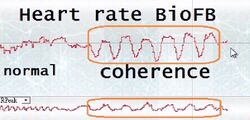Making Sense of My Bio-signals
| Project Infobox | |
|---|---|
| Self researcher(s) | Fu-Chieh Hsu |
| Related tools | sensor |
| Related topics | Stress, Heart rate, Sleep, Activity tracking, Brain activity |
Builds on project(s) |
|
| Has inspired | Projects (0) |
| Show and Tell Talk Infobox | |
|---|---|
| Featured image | 
|
| Date | 2013/10/10 |
| Event name | 2013 QS Global Conference |
| Slides | |
| This content was automatically imported. See here how to improve it if any information is missing or out outdated. |
Making Sense of My Bio-signals is a Show & Tell talk by Fu-Chieh Hsu that has been imported from the Quantified Self Show & Tell library.The talk was given on 2013/10/10 and is about Stress, Heart rate, Sleep, Activity tracking, and Brain activity.
Description[edit | edit source]
A description of this project as introduced by Quantified Self follows:
Fu-Chieh Hsu, a self-explorer and a geek, was interested in understanding how his body, brain, and mind works. So after some self-study, he was absolutely convinced that they are absolutely crucial; he ended up building his own own biosensor systems and is now sharing it with everyone. In this talk, he shares his personal journey to study how bio-signals relate to physical and mental states, and how long-term tracking facilitates personal development.
Video and transcript[edit | edit source]
A transcript of this talk is below:
Thank you I am Fu-Chieh, I’m really excited to be here to share with you how quiet better understanding of our bio signals can help benefit our life.
A little bit about myself, I used to be a technology geek you know, performance geek, now I am a self-explorer and still a geek. So I got interested in understanding how my body, brain, mind works and so after some self-study and absolutely convinced that they are absolutely crucial and we are barely understanding the work. However it’s getting all the necessary tools has not been easy, so we end up building our own biosensor systems and now sharing with everyone. And what we call, I’m wearing one right now and this is taking my brainwaves and I’m wearing want to pick up my ECG as well, and this is the receiver, the controller. So you can see it is really small and very lightweight and easy to wear. So this makes three experiments really really easy. So why it matters? Because we all want good personal and physical health and a good mental balance and with the right tools the bio signals can help us get it. So let’s look at the activity, now the activity now is pretty popular import we use, and I want to point out the posture actually gives are a lot of additional insights. Here, I just want to show that this is a polar chart basically showing the head tilt, trajectory, and this Z-chart at the bottom this is basically particularly head drooping over time. So let’s look at these each individual signals. The muscle you can use the sensors to measure any particular sense, the muscle to check its trends, the endurance and fatigue. Particularly important the muscle, the facial muscle is part of our stress; a body language. So when it comes to the stress we relax the muscle and then we relax our mind and then when you get to the state that we want to be. So here on the stress reduction where it actually produces a small relax kit, and I’m not good to talk much about it, basically the brain wave and the position, posture. Now here I just want to see you interests, what is really going on inside our head, you may be surprised it’s not controlled by our conscious mind. What is really interesting to our brain you have to do these experiments to find it yourself. On the sleep it is relatively simple add it’s actually if you can visualize how our sleep changes over life it is very easy to learn. That gives are a lot of insight to improve the quality of our sleep. What we also find out is that combined with the posture, the posture polar chart and the z-chart you can actually learn a great deal about how our sleep works each night. And meditation, many of the self-quantifiers the Quantified Selfers are meditating that’s good, because the meditation is a very important useful tool to understanding ourselves. And depending on which type you use you can get different kinds of signatures from it. Again here, we show that combined with the posture you can actually see whether you are too tired if you are dozing off in your meditation. There’s nothing wrong with that. The heart rate, the ECG the biofeedback really works as you can see real-time visualize how your heartbeat works you can very easily train yourself to into a coherent mode to control your heart rate. So what I have learned through the Quantified Self community and I have learned a great deal from others what I found out is that I have to have my own experience because everyone is unique. So what we have done is we have made many different kind of tools available and most importantly is our vision, we want to have the tool and affordable and available to all. So thank you very much for your attention. You can find more information on our website.
Thank you.
About the presenter[edit | edit source]
Fu-Chieh Hsu gave this talk.